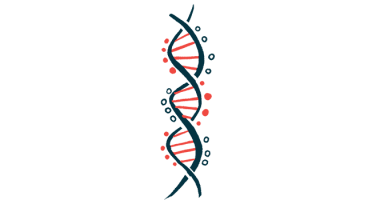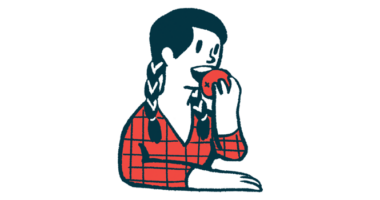Low Thyroid Hormone Thyroxine Levels in PWS Children Increase With Age

Japanese infants with Prader-Willi syndrome (PWS) have lower levels of the thyroid hormone thyroxine compared with healthy infants, according to a new study.
However, the levels of thyroxine, also known as free T4 (FT4), increased with age, with no differences detected between toddlers with or without PWS, the study showed.
These findings suggest that FT4 replacement therapy is likely not required on a routine basis for very young children with the genetic disease who have low levels of the thyroxine hormone.
The study, “Central hypothyroidism improves with age in very young children with Prader‐Willi syndrome,” was published in the journal Clinical Endocrinology.
PWS is caused by genetic alterations that lead to the loss of paternal genes located in chromosome 15 that are known to be active in the hypothalamus — a brain region involved in the control of basic body functions, including temperature, sleep, and food intake.
This impairs hypothalamic functions, leading to endocrine (hormone-related) abnormalities that extend to the so-called hypothalamic-pituitary-thyroid (HPT) axis. The hypothalamus induces the production of thyroid-stimulating hormone (TSH) by the pituitary gland, which in turn stimulates the thyroid gland to produce hormones such as FT4 that play important roles in body function.
While abnormalities in the HPT axis have been implicated in PWS, the effect of a patient’s age on these alterations requires further research.
Now, a group of scientists in Japan addressed this knowledge gap, assessing how age impacts thyroid hormones in PWS children followed at the Osaka Women’s and Children’s Hospital between 2002 and 2019. Specifically, the team compared the levels of thyroid hormones of very young children with PWS — median age 11.2 months — with children without any diagnosed disorder, who served as controls; the healthy controls had a median age of 14.5 months.
Children in the control group were matched for age, sex, body weight, height, body mass index, and albumin levels in the blood. Albumin is a protein marker indicating nutritional status.
In total, the PWS group included 43 children and the control group 85. None of the children included in the analysis had ever received treatment with growth hormone (GH), a therapeutic strategy recommended for PWS patients, or a man-made version of FT4 called levothyroxine.
The children were divided into two subgroups: infants, ages 1 to 11 months, and toddlers, ages 12-47 months, or 1 to nearly 4 years. The infant group included 22 PWS patients and 30 healthy controls, while the toddler group consisted of 21 children with PWS and 55 healthy controls.
The researchers then looked at differences across FT4, TSH, and triiodothyronine (FT3) a thyroid hormone that results from FT4 metabolism.
Results showed that the levels of FT4 were significantly lower in infants with PWS than in the control group, 11.24 picomol (pmol)/L vs. 14.32 pmol/L. No significant differences were detected for FT3 nor TSH levels.
In the toddler group, the scientists saw no significant differences in any of the three hormones for FT4 after adjusting for sex, gender, and other variables.
In both infants and toddlers, a ratio of FT3 to FT4 levels was significantly increased in the PWS group compared with the controls, which the scientists attributed to the accelerated conversion of T4 to T3 in PWS. In addition, the team found that FT4 levels increased with age in children with PWS.
Overall, these results showed that “infants with PWS had lower FT4 levels, but FT3 levels were normal, indicating that the levothyroxine replacement therapy may not need to be routinely performed,” the investigators concluded.






